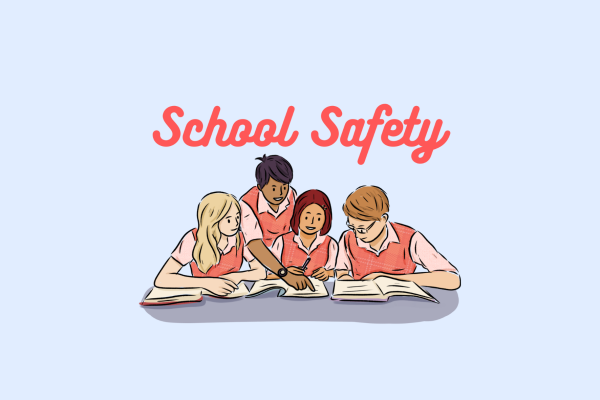RRISD Sends a Dangerous Signal By Caving to Former Cheerleaders’ Demands
Opinion
Eight cheerleaders were expelled from the cheer squad for vaping, along with two who quit in protest. After a former cheerleader expressed outrage at the zero-tolerance policy applied to the students, RRISD has decided to scrap it.
In the aftermath of gender discrimination allegations levied against Westwood by a former cheerleader, RRISD has gotten rid of the zero-tolerance policy for student leadership organizations. The controversy arose when a former cheerleader claimed that RRISD discriminated against cheerleaders by applying a different policy to the cheerleaders who were caught vaping than the district applies to student-athletes. She asserted that the zero-tolerance policy, which was enforced for the expelled cheerleaders, was sexist and violated Title IX by holding them to a stricter standard than other male athletes.
However, cheerleaders are considered student leaders and not student-athletes. This means that the cheer team fell under the student leadership’s zero-tolerance policy and not the student-athletes’ three-strikes policy. Still, some may say that the zero-tolerance policies themselves are too harsh and ineffective. They may also say that cheerleaders should be classified as student-athletes, not student leaders.
If these had been the former cheerleader’s original accusations, I would have agreed with all of these points and joined her in pressuring the district to change the zero-tolerance policy. But that’s not what the cheerleader said. She claimed that the policy was sexist and discriminatory, despite the policy having nothing to do with gender. False allegations like these actually shift the conversation away from the real issues with the removal of the cheerleaders, such as the harshness of the zero-tolerance policy or whether it is fair to classify cheerleaders as student leaders. When accusations of sexism or racism enter the discussion, it becomes much harder to resolve the issue due to their divisive nature.
This situation is just one in a long series of incidents where people have called out racism or sexism when there isn’t any. Earlier this year, a wrestling referee was removed from his position for enforcing a rule that was designed to keep wrestlers safe in the ring. The referee gave a student the option of cutting his dreadlocks or forfeiting the game because his hair was longer than what was allowed. If the referee had actually made this decision based on the competitor’s race, the public’s outrage would have been appropriate. But the decision was based on the clearly stated regulations in the sport’s rulebook, which were established to prevent injury to wrestlers due to wrestling being a high-contact sport. A player having long hair could be extremely dangerous and easily result in them sustaining serious and painful injuries. In the end, the referee was punished for enforcing the rules and the organizations in charge caved to the demands of people who were fundamentally misinformed about the situation.
When people call out discrimination where none exists, no matter how well-intentioned it may be, it makes it harder for people to fight true racism and sexism. Many people don’t believe that sexism or racism is still present in society and are more than happy to use these kinds of bad examples as justification for their beliefs. Resolving racism and sexism requires both legislative and societal change. For either one of these methods to be effective, a plurality of people must support it. Creating false claims of discrimination provides people with ammunition to delay progress and continues the suffering of many people for no reason.
There are also those who really do think that sexism and racism exist but perhaps are growing skeptical of how big of an issue it actually is. They are the villagers in Aesop’s fable The Boy Who Cried Wolf. They want to help and fight discrimination in all of its forms, but they stop running to help at some point because it seems that every other time people accuse a policy of being discriminatory, it isn’t. Some people may already be at this point, and as misrepresentations of racism and sexism continue, the rest will stop coming to the defense of those who are discriminated against, just like the villagers ignored the cries of the boy when the wolf truly came. If people want others to believe them when they say that issues like the family separation policy, police violence, the gender pay gap, and many others have racist or sexist roots, they need to stop making false allegations.
We must also remember that it is not only the people who make these accusations that are at fault. It is also the fault of the people and organizations who face these allegations and yield to them. In both the case of the cheerleader and the wrestler, the organization in charge caved to their demands. When these organizations surrender, it shows that no matter how baseless an allegation is, it will be taken seriously. This sets a dangerous precedent that emboldens people and encourages them to drop common sense in favor of a more reactionary mindset.
The only way to truly stop this cycle is to be better consumers of information. Before we hit the share button, we need to understand what we are sharing. We must understand what truly happened, why it happened, and all of the other relevant details in the case. Organizations of all sizes and purposes should also gain the courage to follow their own rules and not listen to people who are misinformed. If this sounds hard, that is because it is. However, it is well worth it if it means that false allegations won’t be given air. Because in the end, this cycle doesn’t benefit anyone: not the organizations themselves, not the people making the accusations, and not the people who really are discriminated against.

Besides being an editor for Student Press, I enjoy learning about new things, primarily through reading, but also the occasion documentary or YouTube video....

Photographer for Westwood Student Press. I'm a senior. In my free time, I like watching Hulu or Netflix, listening to music, and hanging out with or texting...










